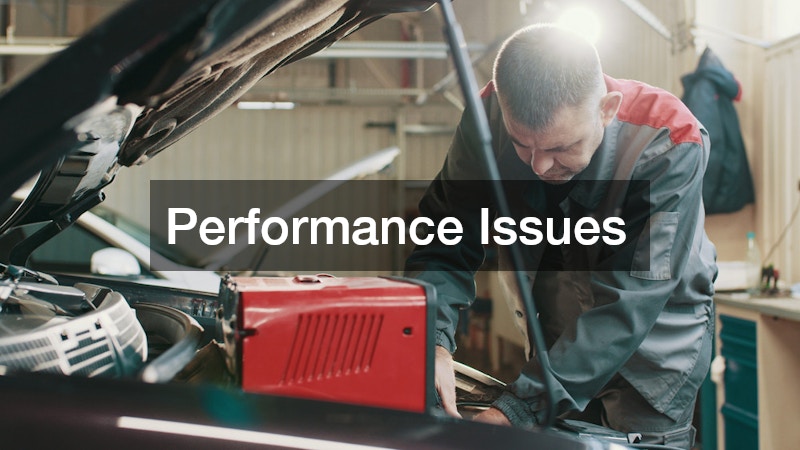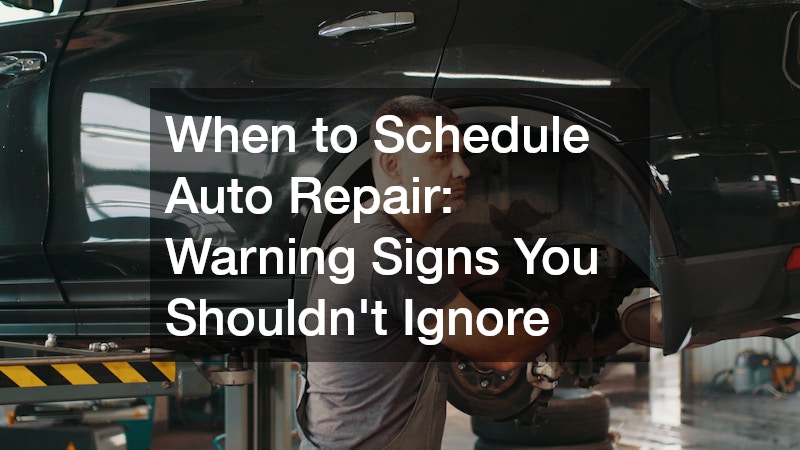
In this article, we will explore the crucial warning signs that indicate when it’s time to schedule auto repair. Understanding these signs can prevent further damage and ensure your vehicle’s longevity. By paying attention to these indicators, you can address issues early and maintain your car’s performance and value.
Unusual Noises
Cars can make a variety of sounds, but not all noises are harmless. If you hear a grinding noise when braking, it could mean your brake pads are worn out. Squealing under the hood might indicate an issue with the serpentine belt, while knocking sounds from the engine could point to more serious problems.
It’s crucial to listen to your vehicle and note recurring or loud noises. Ignoring these sounds may lead to larger mechanical issues. Early detection can save time and money by addressing the root cause before it becomes a major repair.
Warning Lights on the Dashboard
Modern vehicles are equipped with advanced diagnostics systems, which include warning lights on the dashboard. The check engine light is famously vague, but it’s an alert that shouldn’t be ignored. It could be triggered by anything from a loose gas cap to a serious issue like catalytic converter failure.
The oil pressure warning light is another critical alert that demands immediate attention. Ignoring it can lead to severe engine damage due to lack of lubrication. Tire pressure warnings, though less urgent, still affect your vehicle’s safety and efficiency.
Performance Issues
Changes in your car’s performance can be subtle or overt. If your vehicle starts to hesitate during acceleration, it might be a sign of fuel system problems or ignition issues. Similarly, issues like a rough idle could point to a need for immediate repairs.
A drop in fuel efficiency can indicate a range of problems from tire pressure issues to engine malfunctions. It’s essential to monitor your vehicle’s fuel consumption as a measure of its health. Addressing poor performance early prevents wear and tear on other components.
Manufacturer Recommendations
Every car manufacturer provides a recommended maintenance schedule outlined in the vehicle’s manual. Following this schedule helps maintain the warranty and ensures each part is serviced and replaced at optimal intervals. Routine maintenance as per manufacturer guidelines includes oil changes, brake inspections, and fluid checks.
While these schedules serve as a general guide, modifications might be necessary based on your specific driving conditions. Manufacturers’ guidelines are designed for typical driving habits, and variances in usage may necessitate earlier interventions. Sticking to these recommendations is a proactive strategy that aligns with the vehicle’s intended design and longevity.
Factors Affecting Maintenance Frequency
Several factors can impact how frequently your vehicle requires maintenance, including driving habits and environmental conditions. For example, frequent short trips may cause your engine to work harder, necessitating more frequent oil changes. Similarly, driving in extreme temperatures can increase wear on various components.
The terrain on which you regularly drive your vehicle also plays a significant role. Off-road driving or frequent travel on unpaved roads can accelerate wear and tear on the suspension and undercarriage. Tailoring maintenance to match these unique conditions helps maintain vehicle performance and safety.
Balancing Regular Checks and Repairs
Regular checks are crucial to prevent potential breakdowns and ensure vehicle safety. Performing routine inspections not only aids in catching problems early but can also significantly lower repair costs over time. Through consistent maintenance, minor issues are handled before they develop into expensive and time-consuming repairs.
The balance between scheduled maintenance and emergency repairs lies in vigilance and early diagnosis. Proactive measures not only safeguard your investment but enhance resale value by maintaining optimal operating conditions. Since prevention is more affordable than reacting to problems, a regular service plan is an effective cost control tool.
Increased Repair Costs
Delaying auto repairs can escalate minor problems into major issues that are far more expensive to resolve. For example, ignoring a small oil leak can lead to significant engine damage over time. A minor belt issue can cause overheating, ultimately damaging expensive components like the radiator and engine.
Immediate attention reduces the risk of related component damage and prevents cascading failures. As parts fail, they can put extra strain on still-functioning components, worsening the situation. Proactive maintenance minimizes risk and ensures functional longevity at a lower cost.
Impact on Vehicle Longevity
Neglecting proper maintenance directly impacts the overall durability and lifespan of any vehicle. Vehicles that undergo regular service tend to last longer and perform better over the years. Proper care preserves engine integrity, rust resistance, and prevents corrosion, all of which contribute to longevity.
Paying attention to warning signs and scheduling timely auto repairs can save money and ensure safety. By staying vigilant and proactive, you can extend your vehicle’s life and maintain its performance. Incorporating regular checks into your routine proves beneficial in the long run, safeguarding both your investment and peace of mind on the road.





